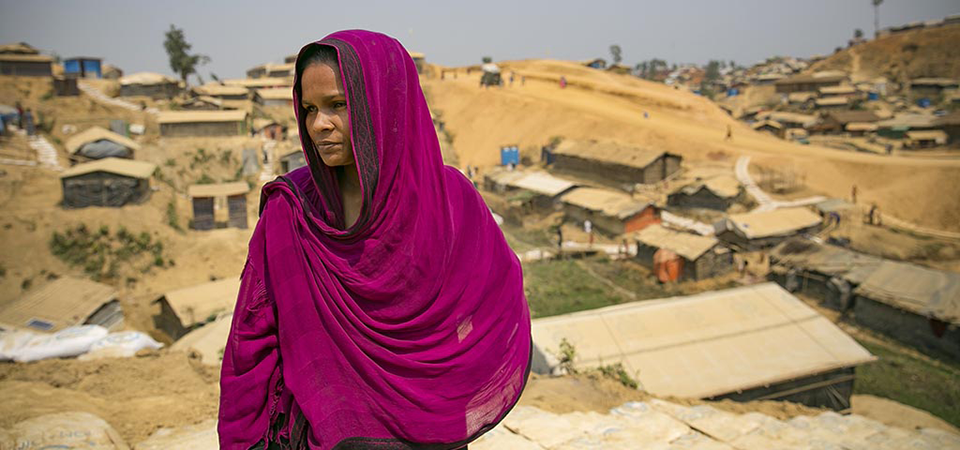World Refugee Day

Infographic | Video | Photo essay | Social media | Take action
World Refugee Day is on 20 June. There are 22.5 million refugees around the world today, and half of them—some 11 million—are women and girls.
UN Women Statement for World Refugee Day 2018
On World Refugee Day, UN Women calls on the global community to ensure that the global compact on refugees provides the services, protection and resources that all refugees need, addressing the rights of all. Read more►
The average length of displacement is now 17 years or more, with entire generations born and raised in refugee camps, and spending a significant portion of their lives as refugees.
Humanitarian action needs to offer long-term solutions that protect and advance women’s rights, provide opportunities that help them thrive, and shape equal, just and more peaceful societies.
UN Women works with millions of people who have left their homes, loved ones and life as they knew, fleeing violence, persecution or disasters. We stand #WithRefugees.
Join us in supporting refugee women and girls around the world in their journey to safer futures.
Six essential objects for refugee women and girls
Today, 50 per cent of refugees uprooted from their homes from conflict, persecution or natural disasters are women and girls. Take a look at some of the objects that give women and girls agency and secure their health, dignity and rights. See more►
Video: World Refugee Day 2018 | UN Women Bangladesh
UN Women works with millions of people who have left their homes, loved ones and life as they knew, fleeing violence, persecution or disasters.
Video: A Syrian refugee in Lebanon – UN Women’s second virtual reality film
On World Refugee Day, step into the world of urban refugees, and follow one family as they navigate their new reality after a harrowing flight from Syria.
Photo essay: "I want to live in peace"
Rohingya women in Bangladeshi refugee camps, the scene of one of the world’s fastest growing crisis, share stories of loss and hopes of recovery. Read more
Social media
Help us raise awareness about the needs and realities of women refugees! Show the world that you stand #WithRefugees via our social media kit that can be found here, available in English, Spanish and French.
Follow us
@un_women, @onumujeres, @onufemmes, @sayno_unite, @phumzileunwomen on Twitter
UN Women, ONU Mujeres, ONU Femmes, Say NO - UNiTE on Facebook
UN Women and Say NO – UNiTE on Instagram
unwomen on Snapchat
UN Women on Google+
UN Women on LinkedIn
UN Women on Pinterest


